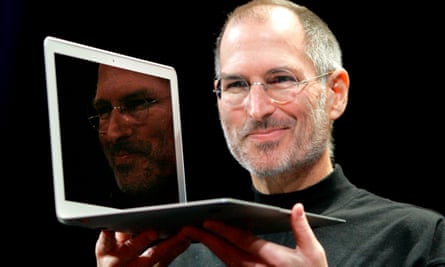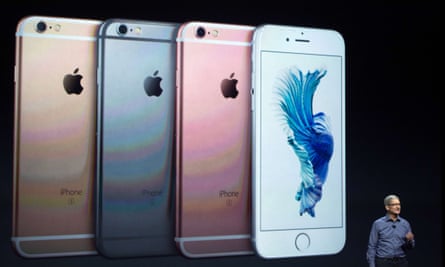Four years ago, I wrote a book about Apple and the power of simplicity. It was the result of my observation, having worked with Steve Jobs as his ad agency creative director in the “think different” years, when Apple’s stellar growth was rooted in Steve’s love of simplicity.
This love – you might call it obsession – could be seen in Apple’s hardware, software, packaging, marketing, retail store design, even the company’s internal organization.
But that was four years ago.
Though Apple’s customers remain fiercely loyal, the natives are getting restless. A growing number of people are sensing that Tim Cook’s Apple isn’t as simple as Steve’s Apple. They see complexity in expanding product lines, confusing product names, and the products themselves.
Is this just perception, or is it reality? Has Apple developed a problem with simplicity? Or is it simply maturing as one should expect from a global company? It’s difficult to be objective because Apple has become the world’s most overanalyzed company. It’s created passionate fans and passionate detractors.
My experience with Steve has led me to admire Apple – but I also believe in tough love. This is a good time to put emotions aside and take a cold, hard look at Apple’s current “state of simplicity”.
Steve Jobs, master of simplicity

First, we need to get one critical fact out of the way: Steve Jobs cannot be replaced. He had the credibility of the founder, extraordinary instinct, vision and energy, and he could make things happen by sheer force of will. It’s just not possible for Apple to be the same without him – but it can still succeed.
Tim Cook has a different style. Remember, he was handpicked by Steve to be Apple’s next leader, and he certainly knows how to make Apple run efficiently. He also recognizes that he doesn’t have Steve’s many talents, so he relies on the expertise of others in those areas where he is less experienced – such as product design and marketing.
That’s where things get a little more complicated. Steve’s vision, strength and charisma made him the benevolent dictator – able to align all the forces within Apple. That kind of performance doesn’t come as naturally to Tim.
Simplicity in the product lines

Apple now sells three different iPhones, four different iPads and three different MacBooks. The Apple Watch comes in seemingly infinite combinations of sizes and bands. The Apple universe is exploding with complexity! Or is it?
One could easily argue that a watch is a fashion product, so the decision here makes sense. And there is ample precedent for Apple expanding existing product lines. The original iPod, for example, successfully grew into a family of products.
Markets mature. A bigger audience has more diverse needs. If Apple were to ignore those needs, they would only force customers to go elsewhere. (As they did for several years by not making a big-screen iPhone.)
So, yes, Apple’s product lines have become more complicated. But really, are they that complicated? The company’s entire selection of products can easily fit on an average-size table. When a company cares about simplicity, it offers the right choices – not endless choices.
Simplicity in software

Critics have had a field day complaining about the growing complexity of Apple software. Apple Music has been attacked mercilessly, and deservedly so. I personally find parts of it to be bewildering.
Apple’s ability to make software solid and simple has come under attack from a number of normally pro-Apple sites. Not that it excuses Apple, but many forget that such lapses also happened on Steve’s watch. He famously went ballistic over the flawed launch of Apple’s early cloud effort called MobileMe.
The fact is, even the best of companies make mistakes from time to time. What’s alarming the Apple crowd today is that the flaws and complexities now seem to be creeping into the products more frequently.
Simplicity in product naming

Once upon a time, Apple’s product naming was extremely simple. Computers were Macs and consumer products were i-devices.
Now the consumer products are offered as i-things and Apple-things (Apple Watch, Apple Pay, Apple Music). But we’ll give Apple a pass on this one because the i is obviously on its last legs, and a transition like this doesn’t happen overnight.
I’m less forgiving when it comes to iPhone naming. With the current models consisting of iPhone 6S, iPhone 6S Plus and SE, Apple’s naming scheme is becoming noticeably less simple.
Then there’s the issue of the S. For some reason, Apple has decided that every other year, it should just add an S to the current model number, because the S-year improvements are internal only. So Apple’s own actions have served to train the public that S years are the “off years”. This is an absurdity, given that such revolutionary features as Siri, Touch ID and 64-bit processing have all been introduced in S models.
The S naming has only served to confuse customers, and make it significantly more difficult for marketing to do its job.
Complicated, yes. But bear in mind that Steve is the guy who started iPhone with the S-names in the first place.
Simplicity in marketing

Apple has a lengthy, award-winning history in advertising. Even marketers in other industries have long considered Apple ads to be the gold standard.
This isn’t because Steve Jobs created great ads himself – it’s because he was adamant about keeping the process simple. He trusted a small group of smart people at his longtime ad agency and he was actively involved in the process, week to week.
There were no middlemen, no multiple levels of approvals, and no focus group research. Trust me, few companies on earth work this way. It was Steve’s way of keeping complexity at bay.
With Steve’s passing, things changed dramatically. Apple is building a large in-house marketing group. Teams compete to produce new campaigns. More people are involved. In short, Apple is now managing its marketing more like a big company and less like a startup.
Does simplicity still rule at Apple?

I have zero doubt that Apple believes deeply in the power of simplicity. Simplicity is at the heart of the company’s products and the foundation of its vision for the future.
But simplicity is a matter of perception, and it’s hard to ignore the fact that Apple is struggling to present a simple image to its customers.
There is serious work to be done in rebuilding the perception of simplicity that helped Apple become the world’s most valuable company. Existing problems need fixing, as do the internal processes that have allowed complicated products to make it into the hands of customers.
That said, it’s important to put Apple’s issues in context. Despite its current challenges – and its lapses – I don’t see any other technology creating a simple experience as well as Apple.
We live in a complicated world, and the companies that deliver simplicity are the ones who win in the end.
Ken Segall worked with Steve Jobs as his ad agency creative director for twelve years. He led the team behind Apple’s legendary Think different campaign and set Apple down the i-way by naming the iMac. He is author of the new book THINK SIMPLE: How Smart Leaders Defeat Complexity.

Comments (…)
Sign in or create your Guardian account to join the discussion